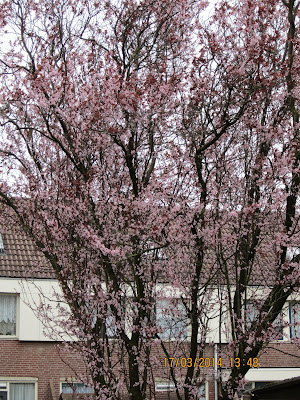Dear Haijin, visitors and travelers,
I hope you all have had a wonderful inspirational weekend, but the weekend is almost over ... so it is time for a new episode of our Haiku Kai. As I told you earlier in March, we are going to explore modern and classical kigo (seasonwords) for spring in April. I hope to give you all an idea of these spring kigo.
Today, as it is April Fool, I have chosen a modern kigo extracted from Jane Reichhold's "A Dictionary of Haiku", a modern saijiki. That will be ... April Fool, but why is the first of April called "April Fool"?
It's not easy to explain that, because there are several explanations about the origines of April Fool, but the explanation I share here is most commonly used to explain April Fool.
 |
| April Fool |
Although April Fools’ Day, also called All Fools’ Day, has been celebrated for several centuries by different cultures, its exact origins remain a mystery. Some historians speculate that April Fools’ Day dates back to 1582, when France switched from the Julian calendar to the Gregorian calendar, as called for by the Council of Trent in 1563.
People who were slow to get the news or failed to recognize that the start of the new year had moved to January 1 and continued to celebrate it during the last week of March through April 1 became the butt of jokes and hoaxes. These pranks included having paper fish placed on their backs and being referred to as “poisson d’avril” (April fish), said to symbolize a young, easily caught fish and a gullible person.
The challenge for today is to create haiku or tanka in which you use humor or riddle and I hoe to read wonderful "April Fool" haiku and tanka.
To conclude this episode I love to share a haiku created by Jane Reichhold as an example for this modern kigo, April Fool:
no April Fools
these crocus buds closed
against the snow
© Jane Reichhold (Extracted from "A Dictionaru of Haiku")
This episode is NOW OPEN for your submissions and will remain open until April 7th at noon (CEST). I will try to publish our new episode later on. For now ... have fun! Have a great hilarious April Fool's Day.










































